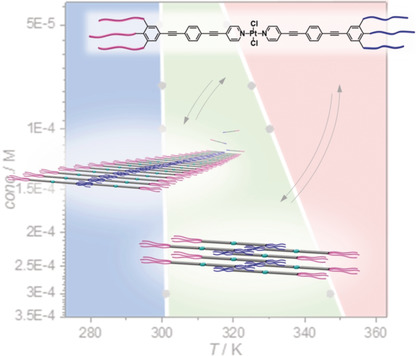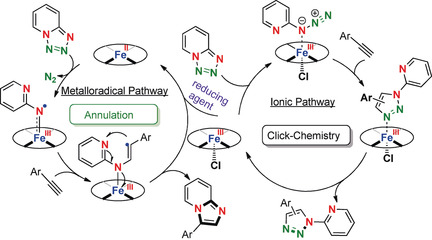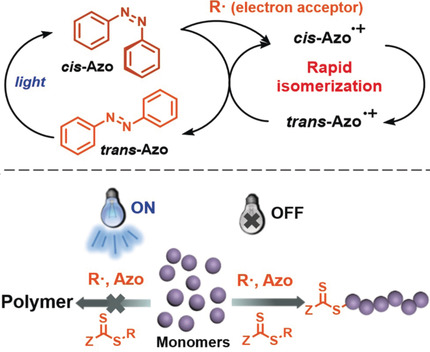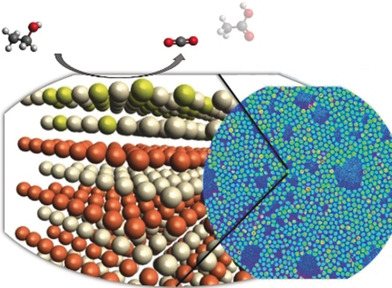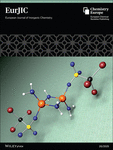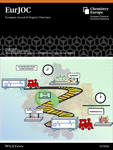Journal list menu
Export Citations
Download PDFs
Cover Pictures
Cover Picture: Oxygen Vacancies on Layered Niobic Acid That Weaken the Catalytic Conversion of Polysulfides in Lithium–Sulfur Batteries (Angew. Chem. Int. Ed. 33/2019)
- Page: 11127
- First Published: 10 July 2019
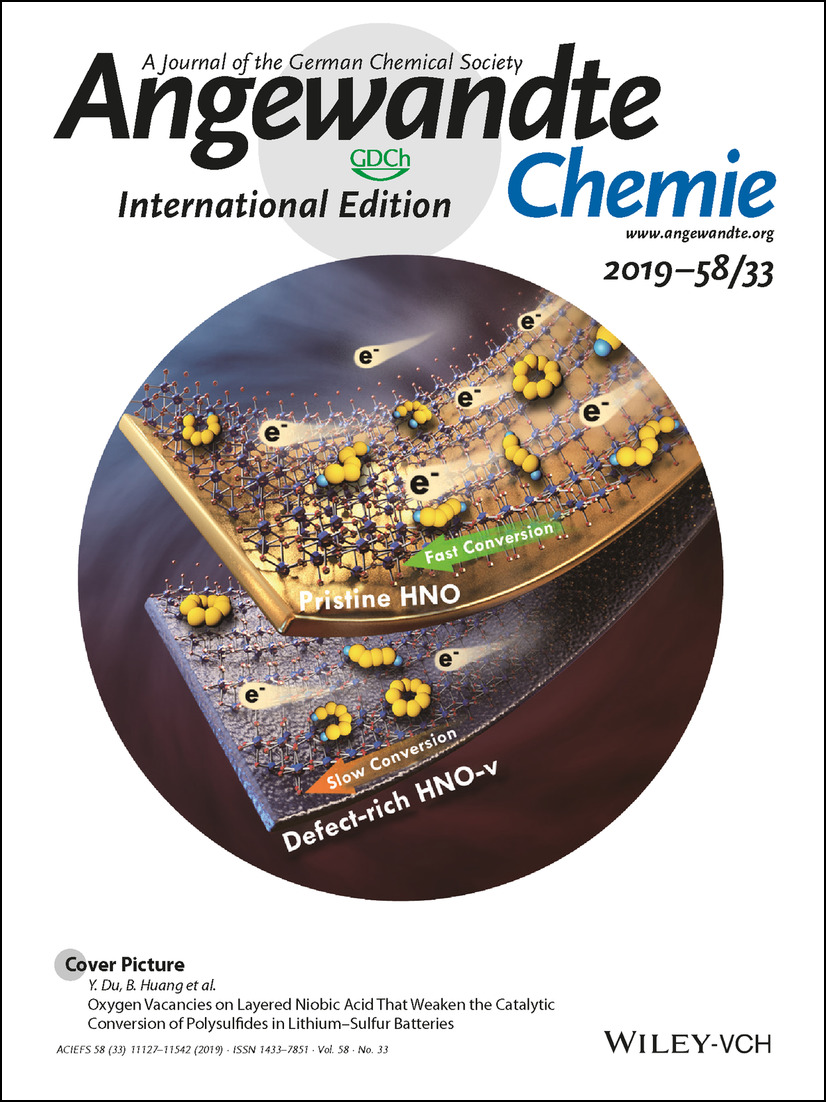
The solid Lewis acid HNb3O8 (HNO) and oxygen-vacancy-rich HNO-v have been investigated for Li-S batteries. As Y. Du, B. Huang et al. show in their Research Article on page 11491 ff., the inferior performance induced by the oxygen vacancy is mainly attributed to the decreased electric conductivity and the weakened adsorption of polysulfide on the catalyst surface.
Inside Cover: Stable Tetra- and Penta-Anions in the Gas Phase (Angew. Chem. Int. Ed. 33/2019)
- Page: 11128
- First Published: 18 July 2019
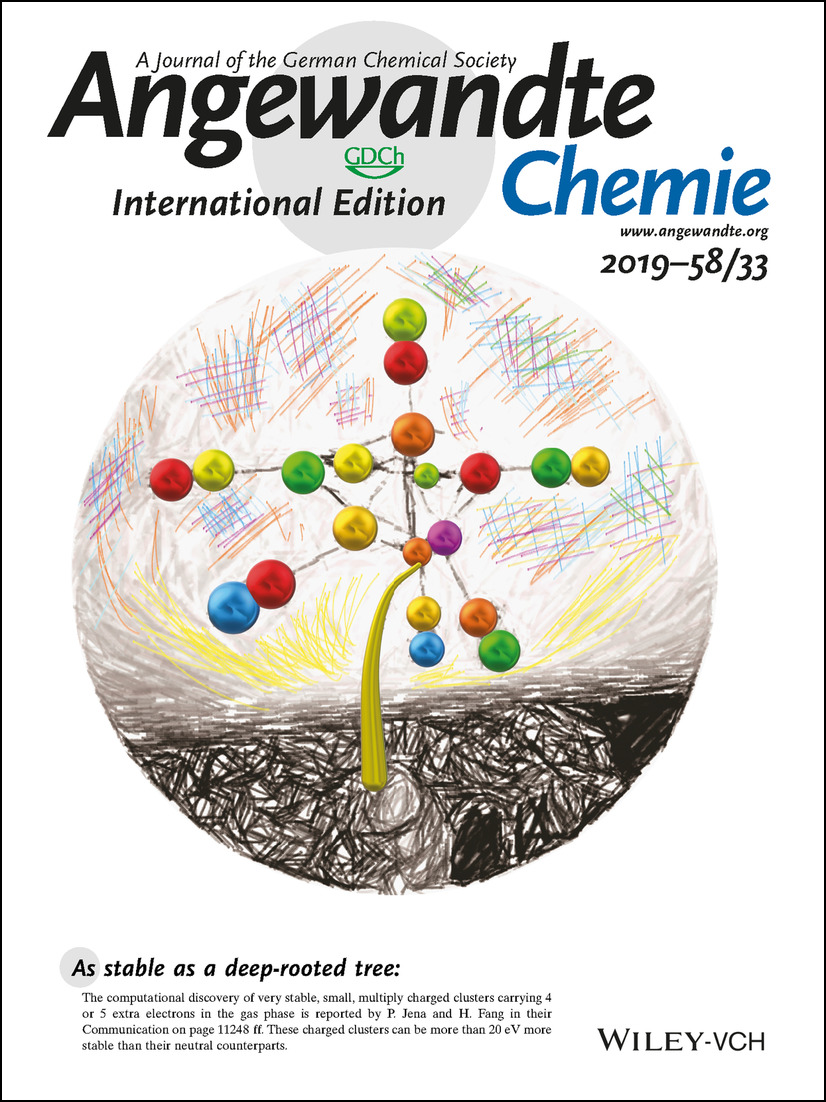
As stable as a deep-rooted tree: The computational discovery of very stable, small, multiply charged clusters carrying 4 or 5 extra electrons in the gas phase is reported by P. Jena and H. Fang in their Communication on page 11248 ff. These charged clusters can be more than 20 eV more stable than their neutral counterparts.
Inside Back Cover: Dinitrogen-Molybdenum Complex Induces Dinitrogen Cleavage by One-Electron Oxidation (Angew. Chem. Int. Ed. 33/2019)
- Page: 11541
- First Published: 26 July 2019
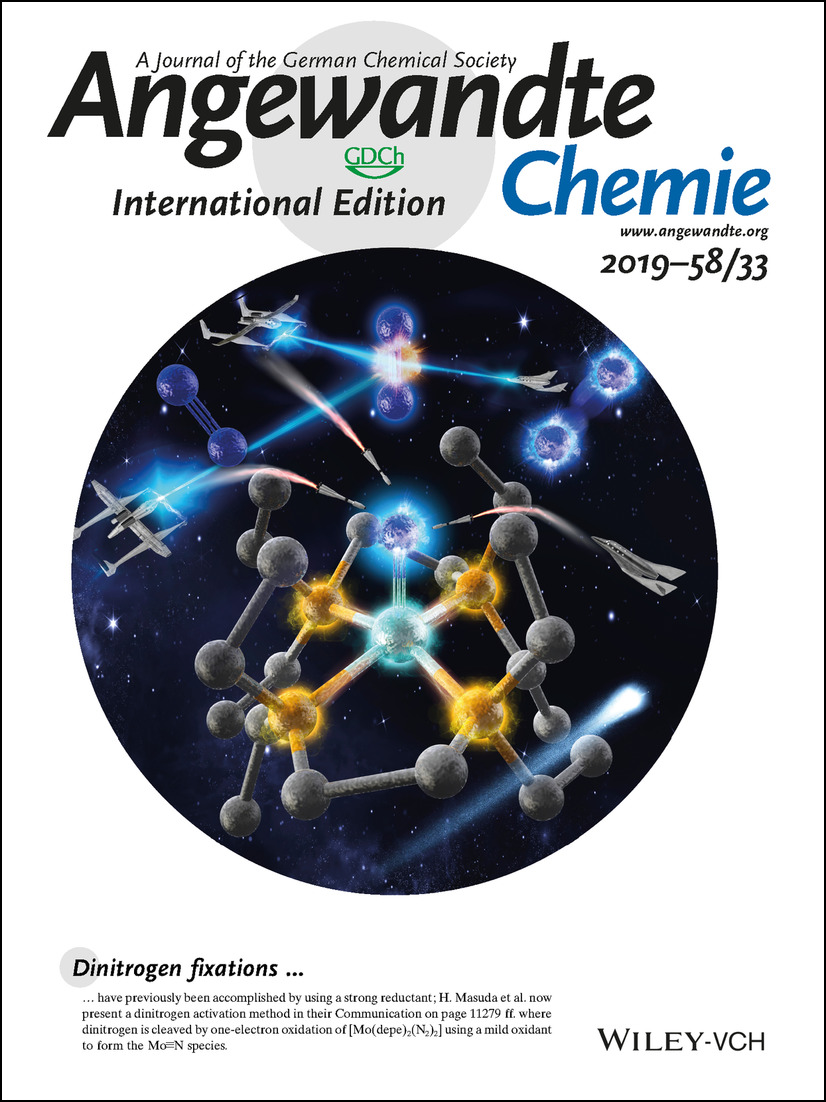
Dinitrogen fixations have previously been accomplished by using a strong reductant; H. Masuda et al. now present a dinitrogen activation method in their Communication on page 11279 ff. where dinitrogen is cleaved by one-electron oxidation of [Mo(depe)2(N2)2] using a mild oxidant to form the Mo≡N species.
Back Cover: Phosphanyl Cyanophosphide Salts: Versatile PCN Building Blocks (Angew. Chem. Int. Ed. 33/2019)
- Page: 11542
- First Published: 10 July 2019

The synthesis of derivatives of cyanophosphide [PCN]2− is described by H. Grützmacher, J. E. Borger et al. in their Communication on page 11429 ff. The characters Au, B, and NHC indicate the substituents onto which PCN can be transferred. The two Chinese characters translate into “Duan Wu”, which refers to the Dragon Boat Festival taking place on the fifth day of the fifth month of the Chinese calendar. It is believed that the fifth month may be one of bad luck so the racing dragon boats are meant to protect the new building block.
Frontispiece
Frontispiece: The Interplay between Structure and Product Selectivity of CO2 Hydrogenation
- First Published: 05 August 2019

Heterogeneous Catalysis The correlation between Co3O4 catalysts having different crystallographic surfaces and the reducibility and the formation energy of oxygen vacancies is described by J. Gong et al. in their Communication on page 11242 ff.
Graphical Abstract
Graphical Abstract: Angew. Chem. Int. Ed. 33/2019
- Pages: 11131-11147
- First Published: 05 August 2019
Author Profile
News
IUPAC–Zhejiang NHU Awards Max Planck–Bristol Centre for Minimal Biology
- Pages: 11151-11152
- First Published: 09 July 2019
Essays
Chemical Industry
An Industry in Transition: The Chemical Industry and the Megatrends Driving Its Forthcoming Transformation
- Pages: 11154-11159
- First Published: 21 May 2019
Minireviews
Hydrogen-Bonded Organic Frameworks
Designing Hydrogen-Bonded Organic Frameworks (HOFs) with Permanent Porosity
- Pages: 11160-11170
- First Published: 19 March 2019
Photochemistry
Synthesis of Tri- and Difluoromethoxylated Compounds by Visible-Light Photoredox Catalysis
- Pages: 11171-11181
- First Published: 03 April 2019
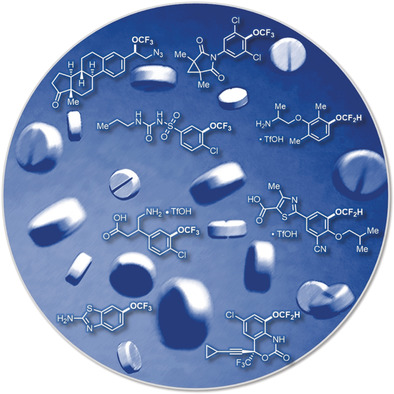
Illuminating OCF3 and OCF2H: Tri- and difluoromethyl ethers are privileged moieties in the realm of medicinal chemistry and are found in marketed pharmaceuticals and agrichemicals. The recent advances in visible-light photocatalytic synthesis of these moieties will likely render their introduction routine as a part of drug design and drug discovery processes.
Reviews
Soft Materials
Bio-inspired Design and Additive Manufacturing of Soft Materials, Machines, Robots, and Haptic Interfaces
- Pages: 11182-11204
- First Published: 01 February 2019
Antibody–Drug Conjugates
The Role of Organic Synthesis in the Emergence and Development of Antibody–Drug Conjugates as Targeted Cancer Therapies
- Pages: 11206-11241
- First Published: 22 April 2019
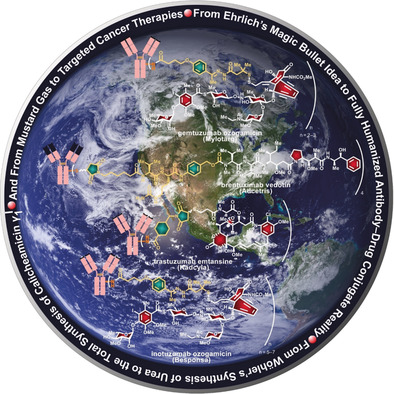
Magic bullet: The field of antibody–drug conjugates (ADCs) is emerging as one of the frontiers in biomedical research, particularly in the area of cancer treatment. Covering oncological applications, and after a brief history of the emergence of the field of ADCs triggered more than a century ago by Paul Ehrlich's “magic bullet” concept, this Review primarily focuses on chemical synthesis aspects of the field.
Communications
Heterogeneous Catalysis
The Interplay between Structure and Product Selectivity of CO2 Hydrogenation
- Pages: 11242-11247
- First Published: 27 May 2019
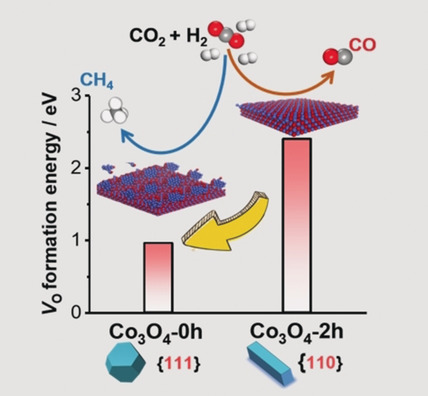
The correlation of Co3O4 catalysts having different crystallographic surfaces with reducibility and the formation energy of oxygen vacancies is described. Distinct product selectivity of CO2 hydrogenation is observed. The key step (CH3−O* bond breaking), which affects C1 product distribution, was identified by in situ DRIFTS and DFT, suggesting that oxygen vacancies can promote the CH3−O* bond breaking.
Charged Clusters
Prebiotic Chemistry
Emergence of Function and Selection from Recursively Programmed Polymerisation Reactions in Mineral Environments
- Pages: 11253-11256
- First Published: 17 June 2019
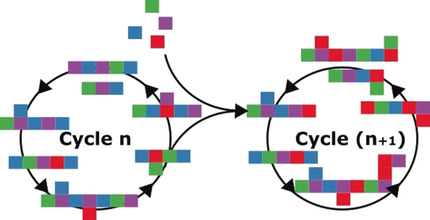
Multiple dehydration cycles were used to produce depsipeptide mixtures. Periodic disruption of the system equilibrium alters the product distribution and increases the catalytic activity of the products. These findings could shed light on how early biological systems may select for specific subsets of polymers.
Rotational Spectroscopy
Supported Catalysts | Very Important Paper
Milling Down to Nanometers: A General Process for the Direct Dry Synthesis of Supported Metal Catalysts
- Pages: 11262-11265
- First Published: 11 June 2019
Solar Cells
Inexpensive Hole-Transporting Materials Derived from Tröger's Base Afford Efficient and Stable Perovskite Solar Cells
- Pages: 11266-11272
- First Published: 04 June 2019
Glycobiology
Chemoenzymatic Synthesis of DSGb5 and Sialylated Globo-series Glycans
- Pages: 11273-11278
- First Published: 29 May 2019
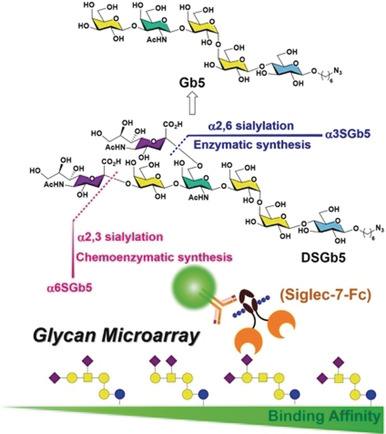
Sialyl-globo-series glycans, including DSGb5 and sialylglobosides, have been prepared using both a one-pot multiple enzyme synthesis method and chemoenzymatic synthesis. The resulting glycans were screened for binding to sialic-acid-binding, immunoglobulin-type lectin-7 (siglet-7) using a glycan-microarray-based binding assay.
N2 Fixation
Dinitrogen-Molybdenum Complex Induces Dinitrogen Cleavage by One-Electron Oxidation
- Pages: 11279-11284
- First Published: 10 June 2019

Time to split: N2 cleavage in a one-electron oxidation reaction of trans-[Mo(depe)2(N2)2], a simple molybdenum complex supported by bidentate phosphine ligands, is studied. The one-electron chemical and electrochemical oxidation reaction of Mo0 to MoI produces a MoIV terminal nitride complex via formation of MoII−N=N−MoII structures, which undergo cleavage of the bridging N2 molecule.
On-Surface Synthesis
Quantum Tunneling Mediated Interfacial Synthesis of a Benzofuran Derivative
- Pages: 11285-11290
- First Published: 23 May 2019
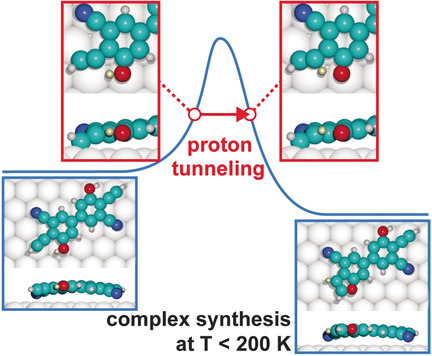
Tunnel vision: The hydroalkoxylation of a molecular species adsorbed on a Ag(111) surface has been shown by scanning tunneling microscopy complemented by X-ray electron spectroscopy and density functional theory to proceed at temperatures as low as 150 K. The proton-tunneling-mediated pathway was theoretically disentangled and confirmed experimentally through the kinetic isotope effect.
Radicals
Stable Cross-Conjugated Tetrathiophene Diradical
- Pages: 11291-11295
- First Published: 17 June 2019
Supramolecular Chemistry | Hot Paper
Formation of a Pillar[5]arene-Based Two-Dimensional Poly-Pseudo-Rotaxane: Threading and Crosslinking by the Same Guest Molecules
- Pages: 11296-11300
- First Published: 17 June 2019
![Formation of a Pillar[5]arene-Based Two-Dimensional Poly-Pseudo-Rotaxane: Threading and Crosslinking by the Same Guest Molecules](/cms/asset/f79caab0-40c2-4dc5-8ee1-581b1e147974/anie201904183-toc-0001-m.jpg)
Common thread: A two-dimensional poly-pseudo-rotaxane is reported wherein the guest molecule (C8) serves to thread the pillar[5]arene (L) units as well as crosslink one-dimensional coordinative polymeric arrays. The combination of L and C8 with silver(I) ion affords the first example of a two-dimensional poly-pseudo-rotaxane.
Materials Science
Tri-Spiral Donor for High Efficiency and Versatile Blue Thermally Activated Delayed Fluorescence Materials
- Pages: 11301-11305
- First Published: 13 June 2019
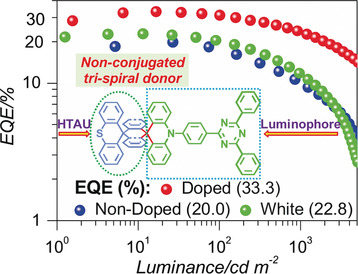
TADF, Tada! By using a tri-spiral donor, the thermally activated delayed fluorescence (TADF) emitter TspiroS-TRZ can achieve a 90 % horizontal orientation dipole ratio and greatly alleviate aggregation-caused emission quenching (ACQ). The emitter demonstrates state-of-the-art external quantum efficiencies (EQEs) of 33.3, 20.0, and 22.8 % in purely organic doped, nondoped sky-blue, and white TADF-OLEDs, respectively. HTAU=hole transporting adjusting unit, OLED=organic light-emitting diode.
Magnetic Nanoparticle Catalysts
Hydrodeoxygenation Using Magnetic Induction: High-Temperature Heterogeneous Catalysis in Solution
- Pages: 11306-11310
- First Published: 12 June 2019
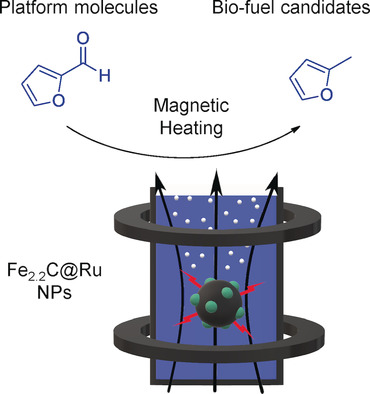
Hot iron: Magnetic heating of Fe2.2C@Ru nanoparticles in solution gives rise to high local temperatures which make it possible to perform the selective hydrodeoxygenation of acetophenone derivatives and platform molecules such as furfural (see figure) and hydroxymethylfurfural under mild conditions (3 bar H2). These reactions are otherwise carried out with standard heterogeneous catalysts at high H2 pressures and temperatures.
Crystal Engineering
Thermally Activated Delayed Fluorescence in an Organic Cocrystal: Narrowing the Singlet–Triplet Energy Gap via Charge Transfer
- Pages: 11311-11316
- First Published: 16 May 2019

Cocrystals comprising trans-1,2-diphenylethylene (TSB) and 1,2,4,5-tetracyanobenzene (TCNB) display thermally activated delayed fluorescence (TADF). The intermolecular charge transfer nature in cocrystals contributes to a small singlet–triplet energy gap and, together with crystalline state in cocrystals, is responsible for the TADF.
Polymer Light-Emitting Diodes
Acridan-Grafted Poly(biphenyl germanium) with High Triplet Energy, Low Polarizability, and an External Heavy-Atom Effect for Highly Efficient Sky-Blue TADF Electroluminescence
- Pages: 11317-11323
- First Published: 23 May 2019
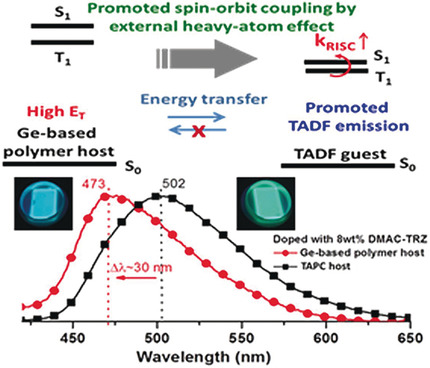
Reaching for the sky: The heavy atom Ge in a σ–π conjugated polymer host provided a high ET level for efficient host–guest energy transfer, low orientation polarizability leading to bluer emission from the guest, and enhanced spin–orbit coupling to promote reverse intersystem crossing and the harvesting of triplet excitons for light emission. The observed sky-blue TADF electroluminescence had a record external quantum efficiency of 24.1 %.
Supramolecular Chemistry
Ion-Mobility Mass Spectrometry for the Rapid Determination of the Topology of Interlocked and Knotted Molecules
- Pages: 11324-11328
- First Published: 07 June 2019
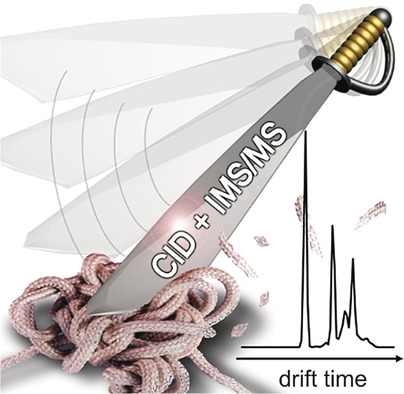
Cutting the Gordian knot: Collision-induced dissociation and travelling-wave ion-mobility mass spectrometry together provide a fast screening method to identify the topology of molecular Hopf and Solomon links, a [3]catenate, and a trefoil knot, even when they coexist in quickly equilibrating dynamic combinatorial libraries.
Photocatalysis
Unraveling the Interfacial Charge Migration Pathway at the Atomic Level in a Highly Efficient Z-Scheme Photocatalyst
- Pages: 11329-11334
- First Published: 21 May 2019
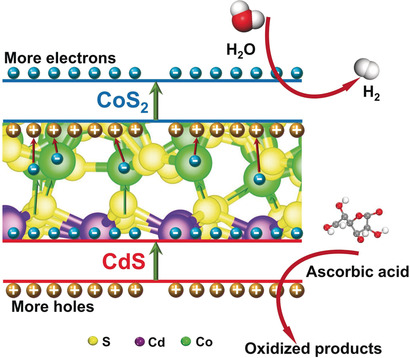
A whole lot of electrons and holes: A highly efficient Z-scheme photocatalyst was constructed from 1D CdS and 2D CoS2. Experimental and theoretical evidence suggests that the transition layer at the interface enables electrons to be transferred from CdS to CoS2, thus resulting in more photogenerated electrons and holes participating in the surface photocatalytic reaction.
Nanoclusters
Structure of the Au23−xAgx(S-Adm)15 Nanocluster and Its Application for Photocatalytic Degradation of Organic Pollutants
- Pages: 11335-11339
- First Published: 27 May 2019

The magic of bulky ligands: In contrast to the 15-atom bipyramidal core in [Au23−xAgx(SR)16], the structure of [Au23−xAgx(S-Adm)15] comprises an Au13−xAgx icosahedral core, three Au3(SR)4 units, and one AgS3 staple motif. Benefitting from Ag doping, [Au23−xAgx(S-Adm)15] exhibits drastically improved photocatalytic activity for the degradation of rhodamine B and phenol under visible-light irradiation compared to Au23 nanoclusters.
Supramolecular Catalysis
Reversing Chemoselectivity: Simultaneous Positive and Negative Catalysis by Chemically Equivalent Rims of a Cucurbit[7]uril Host
- Pages: 11340-11343
- First Published: 17 June 2019
Self-Assembly
Pathway Control in Cooperative vs. Anti-Cooperative Supramolecular Polymers
- Pages: 11344-11349
- First Published: 22 May 2019
Fullerene Crystals
From Cubes to Dice: Solvent-Regulated Morphology Engineering of Endohedral Fullerene Microcrystals with Anomalous Photoluminescence Enhancement
- Pages: 11350-11354
- First Published: 27 May 2019

A roll of the dice: A universal approach to prepare shape-tunable 3D crystals of several metal nitride clusterfullerenes (NCFs), including cubes and dice, which can be readily switched by changing the volume ratio of good (mesitylene) and poor (isopropanol) solvents, is reported. The dice-shaped crystals exhibit anomalously enhanced photoluminescence (PL) relative to that of the cubes.
Cross-Coupling
Enantioselective Palladium-Catalyzed Cross-Coupling of α-Bromo Carboxamides and Aryl Boronic Acids
- Pages: 11355-11359
- First Published: 29 May 2019

A palladium catalyst loading as low as 0.5 mol % enables the cross-coupling of α-bromo carboxamides and aryl boronic acids, generating a series of chiral α-aryl carboxamides in good yields and excellent enantioselectivities. The development of a chiral P,P=O ligand was critical in suppressing the formation of biaryl side products.
RNA Nanotechnology
Bundling mRNA Strands to Prepare Nano-Assemblies with Enhanced Stability Towards RNase for In Vivo Delivery
- Pages: 11360-11363
- First Published: 11 June 2019
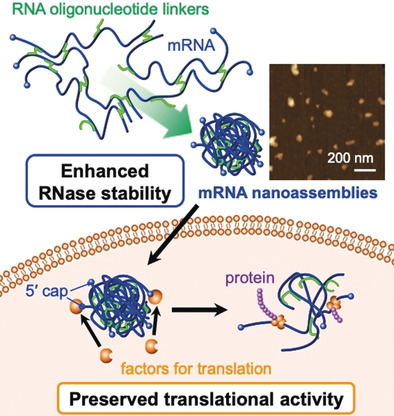
mRNAs were bundled, through hybridization with RNA-oligonucleotide linkers, to form nano-assemblies (R-NAs), resulting in enhanced stability towards RNase and preserved translational activity. R-NAs could be delivered into mouse brain, without the use of a transfection reagent. This strategy could improve the efficiency of mRNA-based therapeutics.
Lithium Batteries
Temperature-Dependent Nucleation and Growth of Dendrite-Free Lithium Metal Anodes
- Pages: 11364-11368
- First Published: 30 May 2019
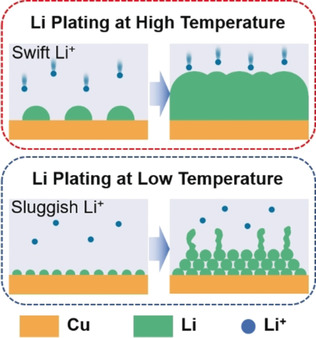
Electrode plating: Strong lithiophilicity and fast lithium-ion migration at elevated temperature facilitate the formation of large and sparse Li nuclei, thus contributing to a compact and smooth Li deposition layer on anodes. Thus dendrite-free Li metal anodes with excellent electrochemical performances were achieved for metal-based batteries.
Oxygen Reduction Reaction
Heterocyclization Strategy for Construction of Linear Conjugated Polymers: Efficient Metal-Free Electrocatalysts for Oxygen Reduction
- Pages: 11369-11373
- First Published: 13 June 2019
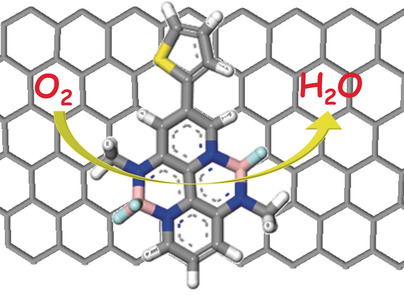
Alterations: Metal-free linear conjugated polymer (LCP) catalysts were developed using N-, S-, or Se-heterocycles with well-defined molecular structures. The LCPs possess good solubility, strong dipole interactions, and tunable local atoms, which can alter the spin density and charge distributions of the conjugated structures, leading to tunable active sites and good oxygen reduction reaction (ORR) activity.
Lithium-Metal Batteries
Facile Generation of Polymer–Alloy Hybrid Layers for Dendrite-Free Lithium-Metal Anodes with Improved Moisture Stability
- Pages: 11374-11378
- First Published: 21 May 2019
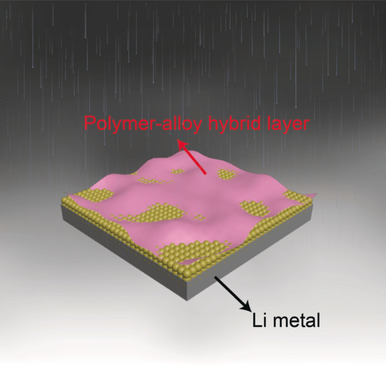
Will behave well if treated well: A simple chemical modification strategy was designed for the preparation of a polymer–alloy hybrid layer on lithium metal for dendrite-free anodes. Treated lithium anodes exhibited outstanding cycling performance in Li–S and Li–LiFePO4 full cells and retained good electrochemical performance after exposure to humid air (see picture).
Heterocycles
Introducing Perylene as a New Member to the Azaborine Family
- Pages: 11379-11384
- First Published: 29 May 2019
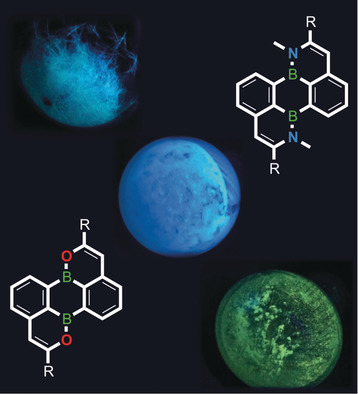
BN/CC isosterism: Doubly BO- and BN-doped perylenes have been prepared, which further expand the chemical space of a ubiquitous building block for organic electronic materials. The key cyclization step proceeds via a quantitative Wacker-type addition reaction of BO−H or BN−H bonds to adjacent alkynyl moieties.
Proteomics | Hot Paper
The Proteome-Wide Potential for Reversible Covalency at Cysteine
- Pages: 11385-11389
- First Published: 20 June 2019
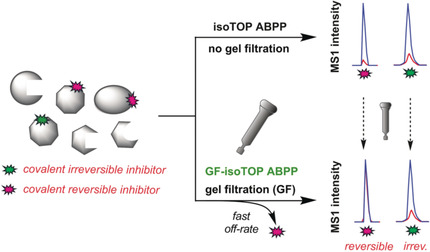
A chemical proteomic platform that integrates gel filtration with activity-based protein profiling (ABPP) provides a method to assess small-molecule electrophiles for reversible versus irreversible interactions with cysteine residues in native biological systems, revealing the broad potential for reversible covalency as a strategy for chemical-probe discovery.
Polymers | Very Important Paper
Rigid Coplanar Polymers for Stable n-Type Polymer Thermoelectrics
- Pages: 11390-11394
- First Published: 11 June 2019
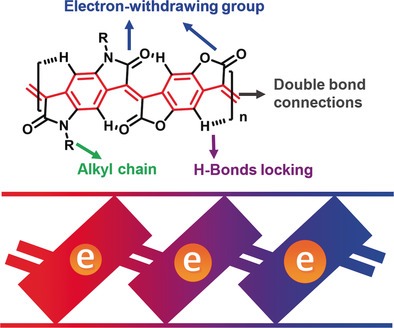
Stability: A new rigid coplanar poly(p-phenylene vinylene) (PPV) derivative, LPPV-1, is synthesized with a rigid planar backbone and low-lying LUMO, which lead to reduced conformational disorder and high n-type doping efficiency. The conductivity of LPPV-1 is up to 1.1 S cm−1, and the power factor is only 2 % after a 7 day exposure to air. This work represents an effective strategy towards high-performance and potentially air-stable n-type polymer thermoelectrics.
PdI Dimer Catalysis
Arylation of Axially Chiral Phosphorothioate Salts by Dinuclear PdI Catalysis
- Pages: 11395-11399
- First Published: 13 June 2019

The first direct C−SP(=O)(OR′)(OR′′) coupling of diverse and chiral phosphorothioate salts with aryl iodides, enabled by an air- and moisture-stable PdI dimer is demonstrated. The mechanistic and computational data suggest distinct dinuclear PdI catalysis to be operative, which allows for operationally simple couplings with broad scope and full retention of stereochemistry.
Halogen Bond Energy
Spectroscopic Measurement of a Halogen Bond Energy
- Pages: 11400-11403
- First Published: 11 June 2019
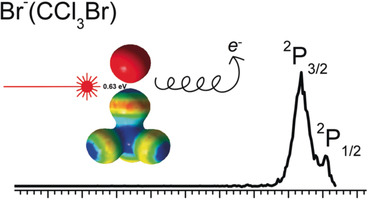
Strong noncovalent interaction: While halogen bonding has been widely recognized in many fields of chemistry, a benchmark spectroscopic measurement of its strength is still absent. Here, the strength of a poster child halogen bond between Br− and CCl3Br using anion photoelectron spectroscopy is reported.
Bacterial Membranes
Inhibition of Pathogen Adhesion by Bacterial Outer Membrane-Coated Nanoparticles
- Pages: 11404-11408
- First Published: 17 June 2019
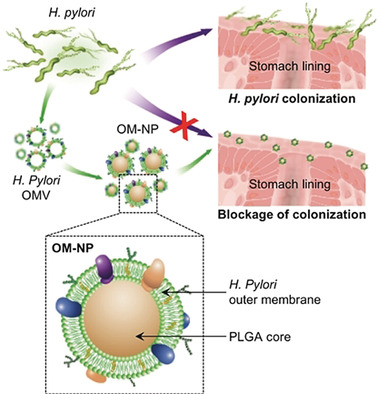
Nanoparticles coated with bacterial outer membranes (denoted “OM-NPs”) are reported as an anti-adhesion nanomedicine that competes with source bacteria for binding sites and therefore inhibits bacterial adhesion to the host cells. Specifically, OM-NPs prepared with Helicobacter pylori outer membrane were demonstrated to inhibit bacterial binding to the gastric epithelial cells and stomach tissues.
Electrocatalysts
Promoting Subordinate, Efficient Ruthenium Sites with Interstitial Silicon for Pt-Like Electrocatalytic Activity
- Pages: 11409-11413
- First Published: 12 June 2019
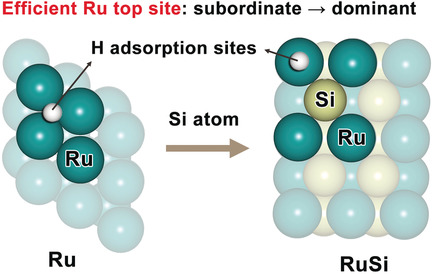
Due for a promotion: Catalytic site preference can be manipulated for the rational design of advanced catalysts. In Ru-based electrocatalysts for the hydrogen evolution reaction, RuSi is identified as a Pt-like electrocatalyst, due to the promotion of the Ru top sites, which are efficient but subordinate in the Ru(0001) catalyst surface.
Nanotechnology
Near-Infrared-Light-Triggered Antimicrobial Indium Phosphide Quantum Dots
- Pages: 11414-11418
- First Published: 11 June 2019
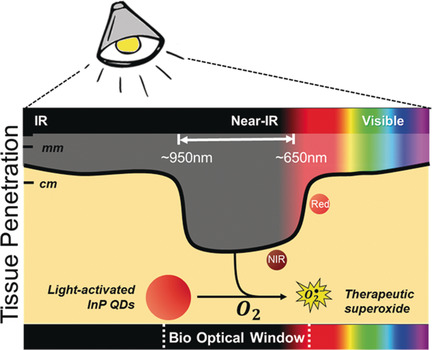
Near-infrared-active quantum dots (QDs) have been designed to generate therapeutic superoxide radicals within pathogens. The combination of activation using a deep-tissue-penetrating light source, and selective mechanism of action, produces an effective treatment. These heavy-metal-free InP QDs successfully eliminate a multidrug-resistant critical pathogen, while leaving human cells unharmed in vitro.
Bioimaging
Structural Engineering of Luminogens with High Emission Efficiency Both in Solution and in the Solid State
- Pages: 11419-11423
- First Published: 17 June 2019
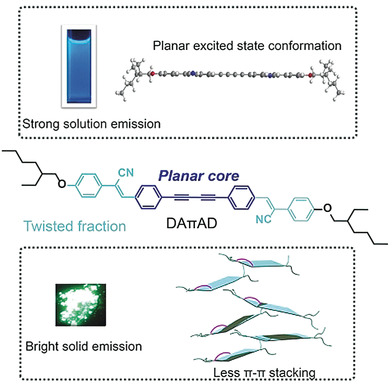
The integration of planar and distorted structures with long alkyl side chains to obtain molecules with high emission efficiency both in solution and the solid state is demonstrated. Efficient intracellular bioimaging using the molecules with different concentrations demonstrates the possibility of applying the highly emissive systems.
C−H Activation | Hot Paper
Utilizing Carbonyl Coordination of Native Amides for Palladium-Catalyzed C(sp3)−H Olefination
- Pages: 11424-11428
- First Published: 11 June 2019
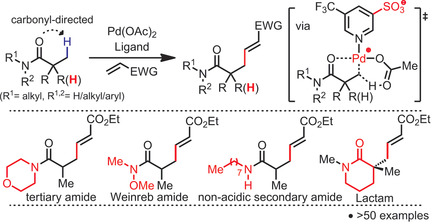
Go native: PdII-catalyzed C(sp3)−H olefination of native amide substrates was developed. To utilize the extremely weak carbonyl coordination ability of amides, an electron-deficient pyridinesulfonic acid ligand was designed. Structurally diverse amide substrates, including lactams, underwent olefination without the undesired cyclization. Olefination products were further diversified through synthetic transformations on the alkenyl moiety.
Phosphaketenes
Phosphanyl Cyanophosphide Salts: Versatile PCN Building Blocks
- Pages: 11429-11433
- First Published: 03 June 2019
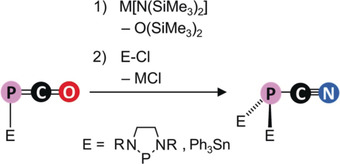
A new brick: The oxygen center in the phosphaketenes E-P=C=O can be readily replaced by nitrogen to give alkali salts of phosphanyl cyanophosphides [E-PCN]−, which are further converted into E2(PCN). These compounds can be used as synthons for the dianion [PCN]2−, which is a building block for PCNB heteroallenes and PCN-containing metal complexes.
Polymers
Step-Growth Coordination Polymerization of 5-Hydroxymethyl Furfural with Dihydrosilanes: Synergistic Catalysis Using Heteroscopionate Zinc Hydride and B(C6F5)3
- Pages: 11434-11438
- First Published: 05 June 2019

In step: The straightforward transformation of 5-hydroxymethyl furfural (HMF) into a polymer is reported here for the first time. This unprecedented step-growth copolymerization of HMF and dihydrosilanes proceeds by a coordination mechanism to afford linear poly(silyl ether)s in the presence of B(C6F5)3 and a heteroscorpionate zinc hydride complex.
Annulations
Iron(II)-Based Metalloradical Activation: Switch from Traditional Click Chemistry to Denitrogenative Annulation
- Pages: 11439-11443
- First Published: 11 June 2019
Heterocycles | Very Important Paper
Pd/PC-Phos-Catalyzed Enantioselective Intermolecular Denitrogenative Cyclization of Benzotriazoles with Allenes and N-Allenamides
- Pages: 11444-11448
- First Published: 13 June 2019

The first example of an enantioselective denitrogenative cyclization of benzotriazoles with allenes and N-allenamides is enabled using Pd/PC-Phos catalysis, and provides rapid access to optically active 3-methyleneindolines in good yields with high ee values. The method features a general substrate scope, high regioselectivity, and mild reaction conditions. Tf=trifluoromethanesulfonyl.
Photoregulation
Switchable Reversible Addition–Fragmentation Chain Transfer (RAFT) Polymerization with the Assistance of Azobenzenes
- Pages: 11449-11453
- First Published: 12 June 2019
Single Electron Transfer | Very Important Paper
Neutral Organic Super Electron Donors Made Catalytic
- Pages: 11454-11458
- First Published: 20 June 2019
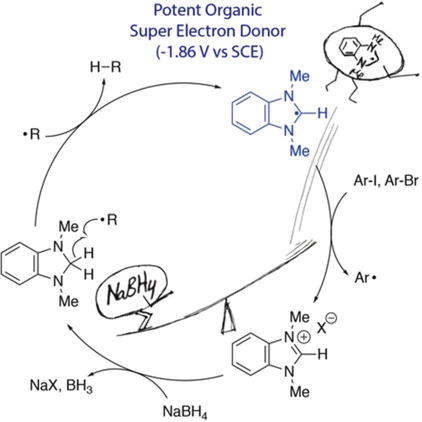
CatalySED! An organocatalytic role for a benzimidazolium salt in radical chemistry is reported. A highly reducing intermediate (−1.86 V vs. SCE) is produced simply by treatment with NaBH4 and then using air as initiator. This is the first time that an organic super electron donor has been used catalytically, which introduces a novel catalytic approach for the upconversion of reducing power.
Metal–Metal Bonding
Diagonally Related s- and p-Block Metals Join Forces: Synthesis and Characterization of Complexes with Covalent Beryllium–Aluminum Bonds
- Pages: 11459-11463
- First Published: 17 June 2019
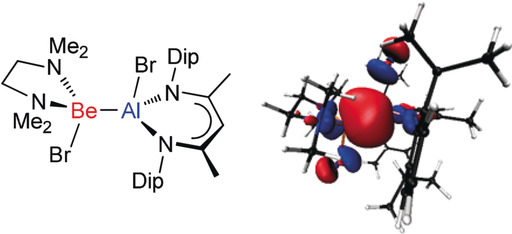
Bondage partners: The first examples of compounds containing beryllium–aluminum bonds are prepared by additions of beryllium–halide bonds, in simple beryllium dihalide adducts, across the metal center of an aluminum(I) heterocycle (see picture, Dip=2,6-diisopropylphenyl). Computational studies reveal the covalent Be-Al bonds to be weakly polarized, and high in s-character.
Organocatalysis
Synthesis of Chiral Aldehyde Catalysts by Pd-Catalyzed Atroposelective C−H Naphthylation
- Pages: 11464-11468
- First Published: 13 June 2019

A concise synthetic route to chiral aldehyde catalysts with Pd-catalyzed atroposelective C−H naphthylation as a key reaction is reported. These chiral aldehyde catalysts were successfully employed as ligands in the asymmetric activation of glycine esters enabling a higher level of asymmetric induction and reaction activity. A wide range of enantioenriched biaryls were prepared in synthetically useful yields with excellent enantioselectivities (up to >99 % ee).
In Vivo Imaging
Nanobody-Conjugated Nanotubes for Targeted Near-Infrared In Vivo Imaging and Sensing
- Pages: 11469-11473
- First Published: 21 May 2019

Revealing tracks: GFP-targeting nanobodies were conjugated to single-walled carbon nanotubes (SWCNT), which show nonbleaching fluorescence in the near-infrared regime. The SWCNT–nanobody conjugates were then used for targeted sensing of dopamine and in vivo deep-tissue immunolabeling, as well as for tracking a motor protein in embryos of Drosophila melanogaster.
Fluorescent Probes
Single-Molecule Imaging of Active Mitochondrial Nitroreductases Using a Photo-Crosslinking Fluorescent Sensor
- Pages: 11474-11478
- First Published: 30 May 2019
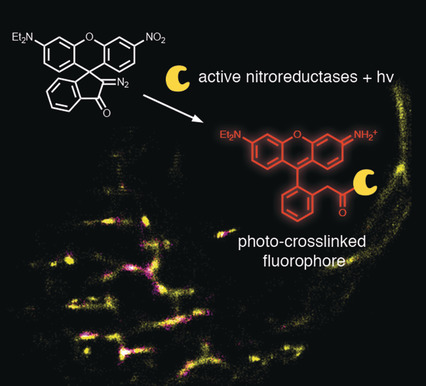
An activity-based, photo-crosslinking fluorescent probe is used to map the sub-mitochondrial distribution of mammalian nitroreductases. This probe is activated sequentially by nitroreductases and light to give a photo-crosslinked adduct of active enzymes. This probe can be combined with a mitochondria-specific marker for two-color, three-dimensional, single-molecule fluorescence microscopy.
Organocatalysis
Deracemizing α-Branched Carboxylic Acids by Catalytic Asymmetric Protonation of Bis-Silyl Ketene Acetals with Water or Methanol
- Pages: 11479-11482
- First Published: 27 May 2019
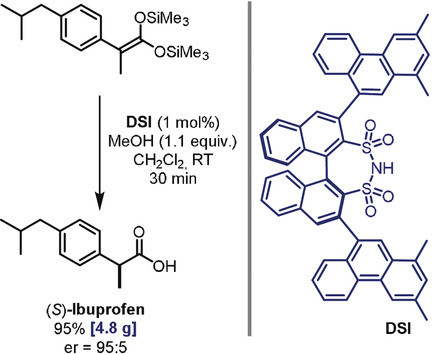
Highly enantioselective catalytic protonation of bis-silyl ketene acetals delivers α-branched carboxylic acids, including nonsteroidal anti-inflammatory arylpropionic acids such as Ibuprofen, in high enantiomeric purity and high yields. The process can be incorporated in an overall deracemization of α-branched carboxylic acids, involving a double deprotonation and silylation followed by the catalytic asymmetric protonation.
Research Articles
N-Heterocyclic Carbenes
N-Heterocyclic Carbene Catalyzed (5+1) Annulations Exploiting a Vinyl Dianion Synthon Strategy
- Pages: 11483-11490
- First Published: 13 June 2019

Inversion: Two C−C bonds are formed between three conjugate acceptors by N-heterocyclic carbene (NHC) catalyzed polarity inversion of α,β-unsaturated ketones and esters. Inter- and intramolecular (5+1) annulations are possible, exploiting an unusual vinyl dianion synthon strategy. The reaction provides access to mono- and bicyclic cyclohexanones. Mechanistic studies and derivatizations are also reported. EWG=electron-withdrawing group.
Batteries
Oxygen Vacancies on Layered Niobic Acid That Weaken the Catalytic Conversion of Polysulfides in Lithium–Sulfur Batteries
- Pages: 11491-11496
- First Published: 17 June 2019
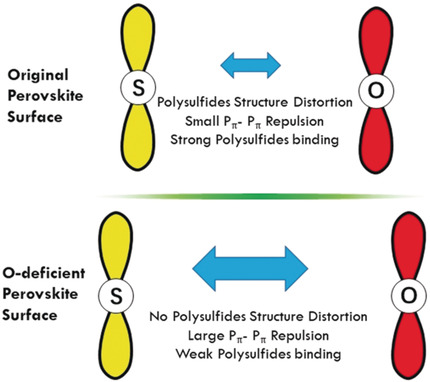
In lithium–sulfur batteries, oxygen vacancies are usually considered beneficial in the catalytic conversion of polysulfides. The conversion of polysulfides is now shown to be hindered by oxygen vacancies on ultrathin niobic acid. The inferior performance induced by the oxygen vacancy was attributed to the decreased electric conductivity and the weakened adsorption of polysulfides on the catalyst surface.
Perovskite Solar Cells | Very Important Paper
Coagulated SnO2 Colloids for High-Performance Planar Perovskite Solar Cells with Negligible Hysteresis and Improved Stability
- Pages: 11497-11504
- First Published: 31 May 2019

A power conversion efficiency of 21.38 % with negligible hysteresis is obtained for planar-type perovskite solar cells. NH4Cl-induced coagulated SnO2 colloids were studied as the electron transport layer (ETL), and the ETL/perovskite interface is modified with a well-matched energy band alignment and suppressed defects.
Homogeneous Catalysis | Very Important Paper
Chemo- and Enantioselective Hydrogenation of α-Formyl Enamides: An Efficient Access to Chiral α-Amido Aldehydes
- Pages: 11505-11512
- First Published: 12 June 2019

A new arrow in the quiver: A highly chemo- and enantioselective hydrogenation of α-formyl enamides has been developed for the synthesis of chiral α-amido aldehydes in high yields (98–99 %), with excellent chemo- and enantioselectivities (up to >99.9 % ee), and with high substrate/catalyst ratios (up to 20000 S/C). Computations give a clear description of the R/S pathways of the catalytic cycle.
Glycosylation | Hot Paper
Molecular and Structural Characterization of a Promiscuous C-Glycosyltransferase from Trollius chinensis
- Pages: 11513-11520
- First Published: 04 June 2019

A promiscuous C-glycosyltransferase, TcCGT1, is highlighted. TcCGT1 represents the first flavone 8-C-glycosyltransferase that exhibits robust substrate promiscuity towards different types of flavonoids. The crystal structure of TcCGT1, the first crystal structure of a plant CGT, is shown. This work provides a basis for protein engineering to design efficient glycosylation biocatalysts for drug discovery.
Light-Emitting Diodes
Site-Selective Occupancy of Eu2+ Toward Blue-Light-Excited Red Emission in a Rb3YSi2O7:Eu Phosphor
- Pages: 11521-11526
- First Published: 05 June 2019
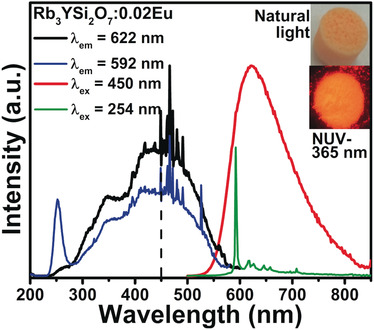
Rb3YSi2O7:Eu is used for phosphor-converted LEDs in solid-state lighting. It exhibits impressive properties, including an unprecedented blue-light-excited red emission in the oxide system. The results can initiate more exploration on how site-selective occupation design enables the discovery of blue-light-excited Eu2+-doped red-emitting oxide-based phosphors for white LEDs.
Electrocatalysis
Ternary CoPtAu Nanoparticles as a General Catalyst for Highly Efficient Electro-oxidation of Liquid Fuels
- Pages: 11527-11533
- First Published: 17 June 2019
Alkaloid Biosynthesis
Guanitrypmycin Biosynthetic Pathways Imply Cytochrome P450 Mediated Regio- and Stereospecific Guaninyl-Transfer Reactions
- Pages: 11534-11540
- First Published: 17 June 2019

Novel pyrroloindoline alkaloids: Eight rare natural products were identified and their biosynthetic pathways were elucidated by heterologous expression of two gene clusters. Cytochrome P450s as key enzymes catalyze the regio- and stereospecific transfer of a guaninyl moiety to C3 of the indole ring in cyclo-l-Trp-l-Phe (Tyr). Non-enzymatic epimerization via keto–enol tautomerism further increases structural diversity.




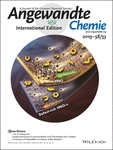

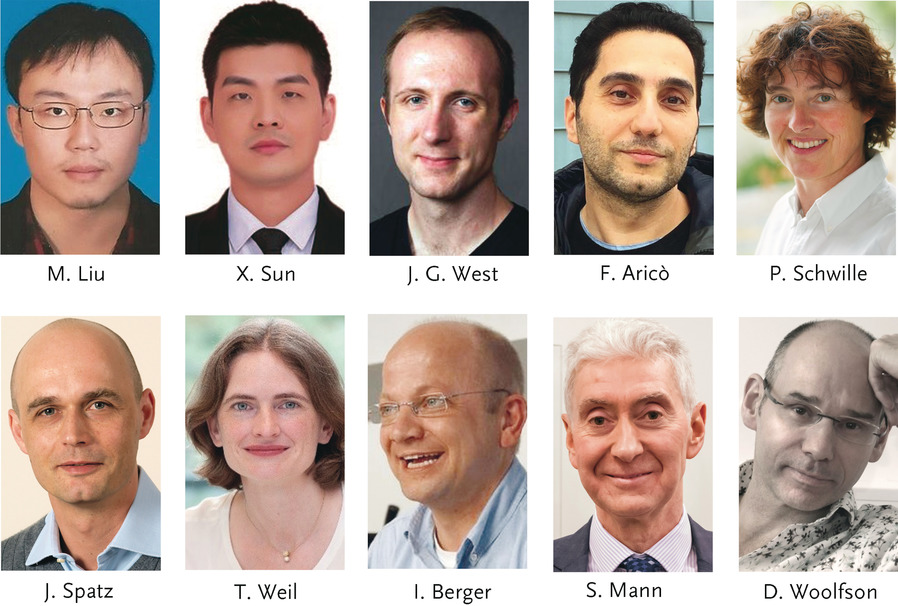


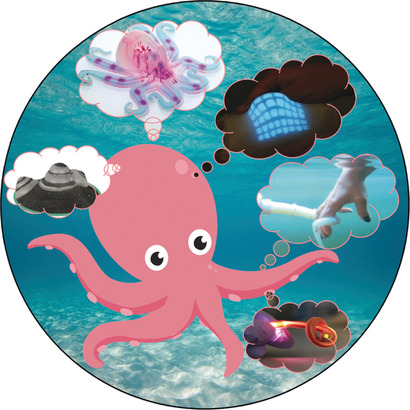
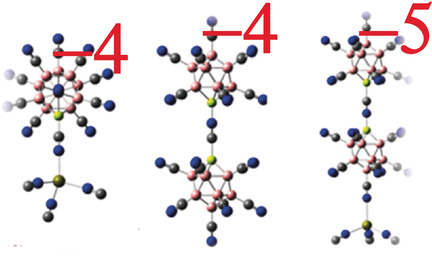
![Water Docking Bias in [4]Helicene](/cms/asset/51fc44c9-62ef-4e07-9c0d-f5dbb08d1436/anie201902889-toc-0001-m.jpg)

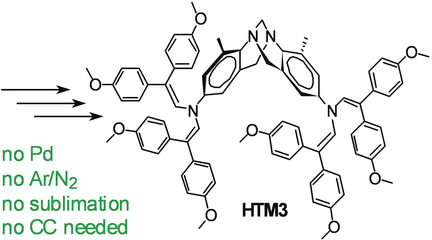
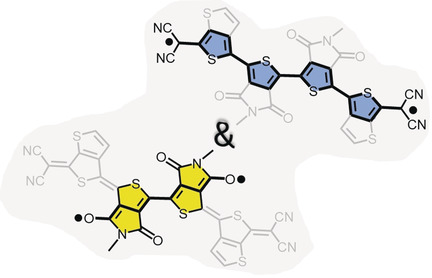
![Reversing Chemoselectivity: Simultaneous Positive and Negative Catalysis by Chemically Equivalent Rims of a Cucurbit[7]uril Host](/cms/asset/2443bb51-84f4-4bfc-9d36-8012b84c0860/anie201905027-toc-0001-m.jpg)
